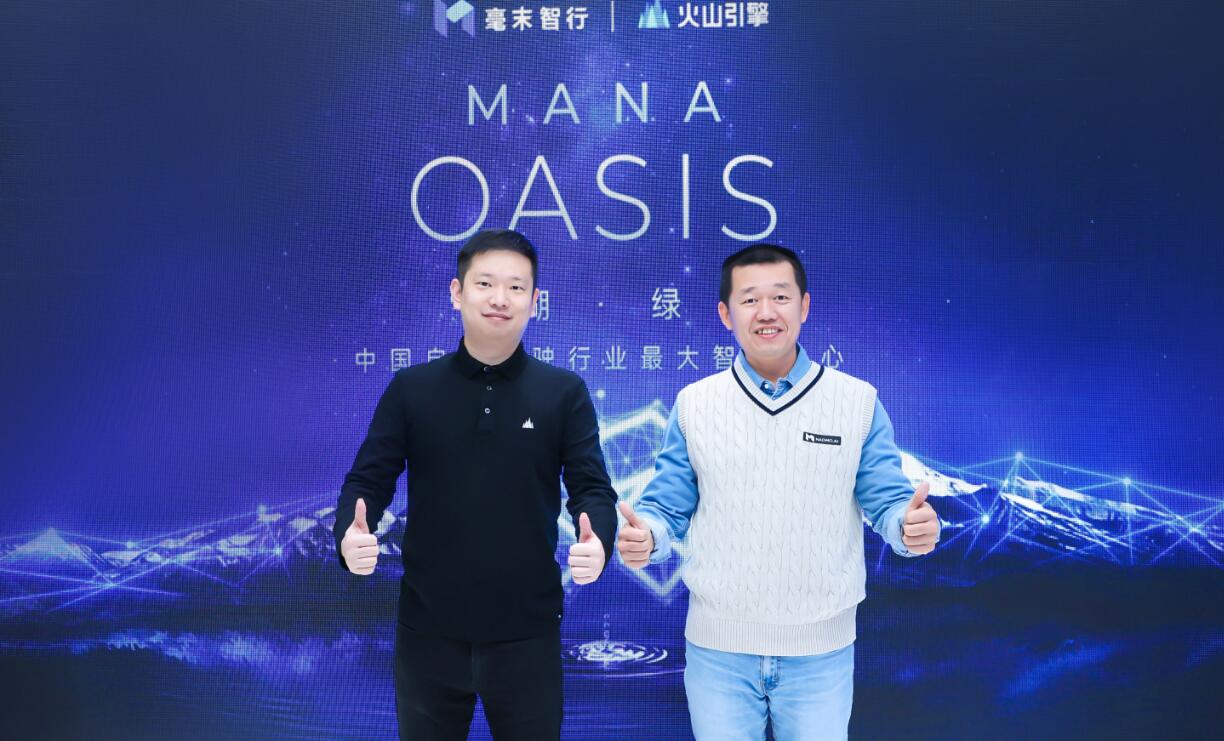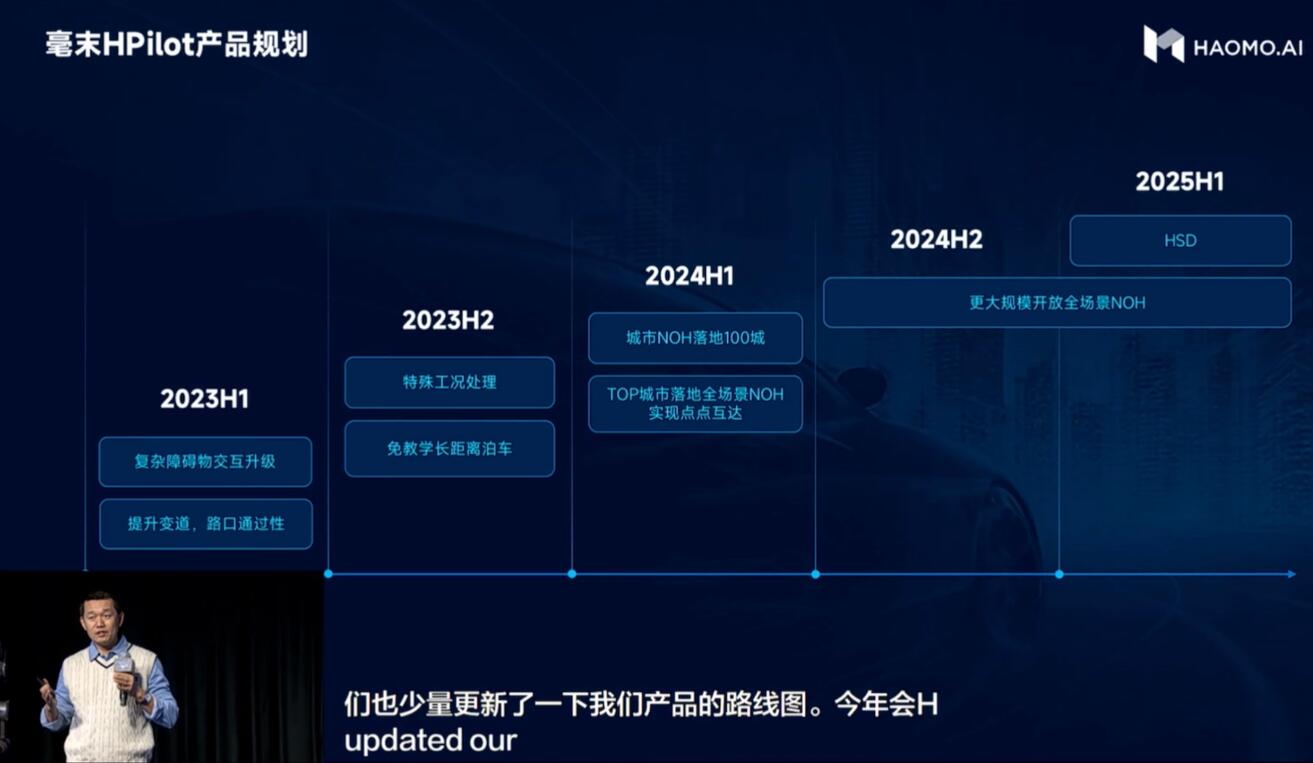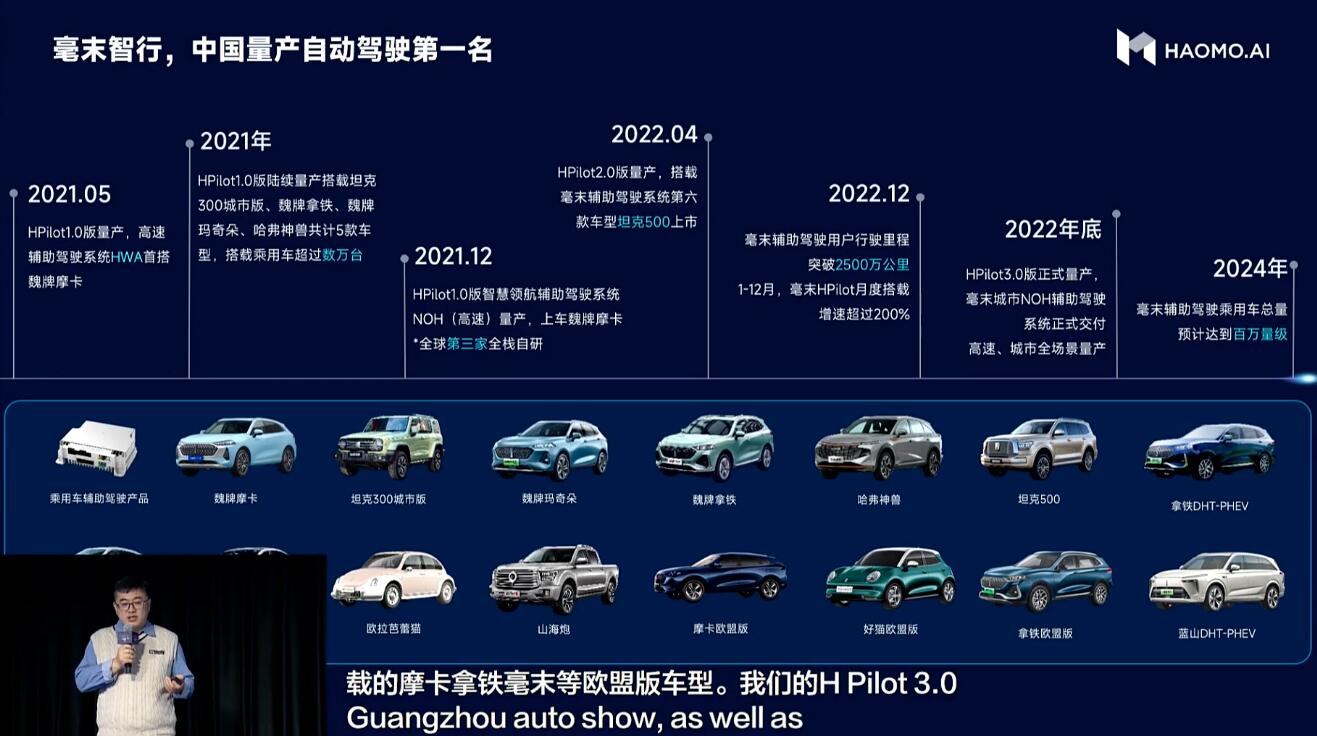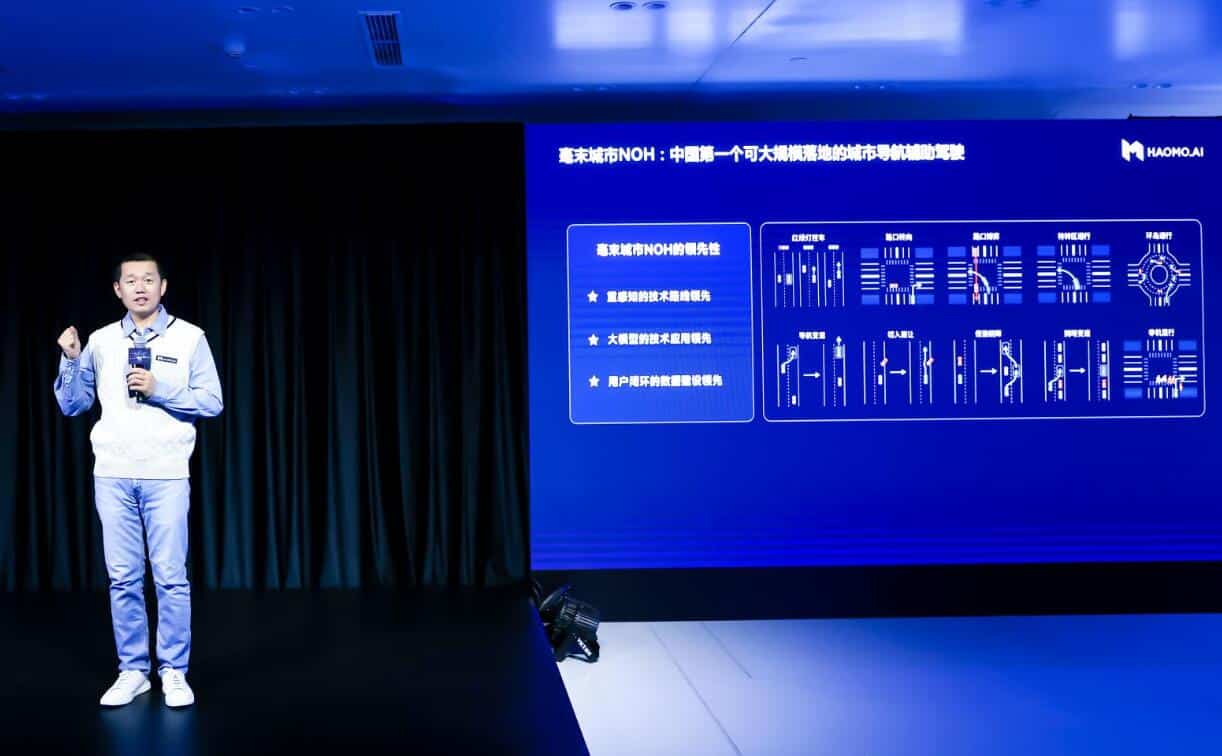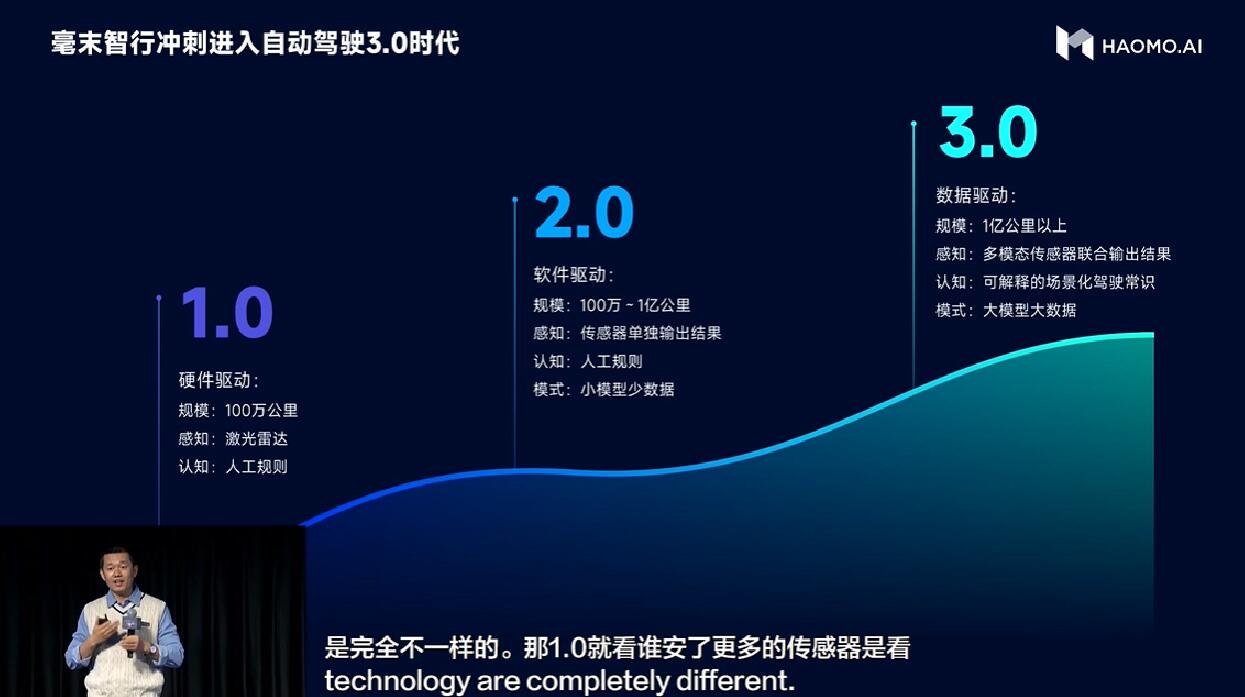Tesla has pioneered the autonomous driving 3.0 era, and Haomo is most likely to be the first Chinese company to do the same, analyst says.
When Xpeng (NYSE: XPEV) announced in early August that it had built what was then China's largest autonomous driving computing center, it probably didn't anticipate that an unknown local startup would build a similar, more powerful facility five months later.
Beijing-based, Great Wall Motor-backed startup Haomo.AI Technology Co Ltd unveiled MANA OASIS, China's largest self-driving computing center to date, at its seventh AI Day event today.
The computing center, launched by Haomo together with Volcano Engine, a cloud service platform owned by ByteDance, has a total computing power of 670 PFLOPS.
Prior to MANA OASIS, the most powerful autonomous driving computing center in China was Fuyao, built by Xpeng on Alibaba Cloud's computing platform, announced by the EV maker on August 2, which has a total computing power of 600 PFLOPS.
With Fuyao's support, Xpeng's self-driving core models are 170 times faster to train and the training time was reduced from seven days to within one hour, the company said at the time.
Xpeng is recognized as having the strongest self-driving capabilities among local Chinese automakers, while as a comparison, Haomo is not as well known as a startup company.
Haomo was the autonomous driving division of Great Wall Motor and became an independent company in November 2019. Its core team is partly from Great Wall Motor's smart driving R&D team and partly from tech companies including Baidu and Huawei.
In fact, backed by Haomo's technology, Great Wall Motor's Wey Coffee 01 and Ora Funky Cat both achieved five stars in the 2022 Euro NCAP ratings.
While the company isn't as high-profile as Xpeng and is far less well-known than the latter, it has actually been seen by some analysts as the Chinese company most likely to challenge Tesla in the autonomous driving space.
High-level assisted driving is accelerating
At a time when China's EV industry is growing rapidly, autonomous driving technology is seen as the next phase of competition. Haomo appears to have been founded to compete in the future, and its current moves are for building a powerful arsenal.
In the passenger car segment, advanced assisted driving systems are being widely adopted as the penetration of EVs exceeds 30 percent in China.
In the first quarter of 2022, sales of models with L2 assisted driving systems contributed 23.2 percent of all vehicle sales, consulting firm IDC said in a report last April.
The penetration of L2 assisted driving systems in the new energy vehicle (NEV) market reached 35 percent, much higher than the 19.9 percent in the internal combustion engine vehicle market, the report said.
The development of autonomous driving technology has been incorporated into China's national strategy, and with the rapid growth in the size of the NEV market, the penetration rate of L2-assisted driving will climb further, IDC said.
From January to September 2022, China's penetration of advanced assisted driving systems reached 33.5 percent, which is expected to exceed 50 percent by 2025, according to the latest data from market research firm Zuosi.
Founded three years ago, Haomo focuses on autonomous driving AI technology, and its products are now widely used in logistics vehicles as well as passenger cars.
By the end of 2022, Haomo's third-generation assisted driving system, HPilot, had been installed in more than 20 models and assisted users in driving more than 25 million kilometers, according to the company.
For the city assisted driving function, Haomo's City NOH software has reached delivery status and is currently undergoing road tests in several cities.
Models equipped with Haomo City NOH will be available in 2023, and the number of cities supporting the feature is expected to reach 100 by the first half of 2024, the company said at today's event.
Infrastructure arms race
Another company that is equally aggressive in building advanced assisted driving capabilities is Xpeng, which said a month ago that it plans to launch its next-generation intelligent assisted driving system, XNGP, in the third quarter of 2023 and the feature will be available in dozens of cities.
The basis for Haomo and Xpeng's ability to be so aggressive in their use of cutting-edge technology is their arms race in infrastructure, and the two companies are currently the only ones with autonomous driving computing centers in China.
Haomo's MANA OASIS has computing power almost entirely for autonomous driving, and its architecture is specifically arranged according to the business needs of autonomous driving.
With MANA OASIS, Haomo has updated its five key models for developing autonomous driving, namely the visual self-monitoring model, the 3D rebuilding model, the multi-modal mutual supervision model, the dynamic environment model, and the driver self-supervision model.
The visual self-monitoring model makes 100 percent automatic annotation of 4D video clips a reality, reducing the cost of manual annotation by 98 percent, according to the company.
The 3D rebuilding model leverages on the NeRF technology to generate highly realistic data by changing the angle of view, illumination and texture materials, allowing Haomo to easily gain data on corner cases, which could be very expensive to acquire otherwise and reducing the rate of wrong perception by 30 percent.
The multi-modal mutual supervision model helps a vehicle to recognize barriers with abnormal sizes, while the dynamic environment model keeps the vehicle always on the right path and the driver self-supervision model learns from experienced and skillful drivers and allows the vehicle to make smarter decisions about how to drive.
In terms of training efficiency, MANA OASIS can complete foundation model training with trillions of parameters, which improves training efficiency by 100 times.
"With abundant data and computing power enabled by MANA OASIS, Haomo's product capability will be even stronger, steering the company into the era of autonomous driving 3.0," said Gu Weihao, CEO of Haomo.
Gu considers the autonomous driving 1.0 era as hardware-driven, the 2.0 era software-driven and the 3.0 era data-driven.
In the 3.0 era, data will be in self-training mode, and self-driving mileage will increase from millions of kilometers in the first two eras to the 100 million kilometer level, said Bai Yu, chief analyst of the auto industry at local Chinese brokerage Pacific Securities, in a December 27 research note.
Tesla has taken the lead in the autonomous driving 3.0 era, while Haomo is most likely to be the first Chinese company to move into the autonomous driving 3.0 era, according to Pacific Securities.
Haomo's autonomous driving data intelligence system MANA has more than 310,000 hours of learning, and the virtual world driving experience is equivalent to 40,000 years of driving experience for human drivers, according to the analyst.
Relying on the advantages of massive data scale, the supercomputing center will further build and strengthen Haomo's competitive advantages and industry barriers, according to Pacific Securities.

